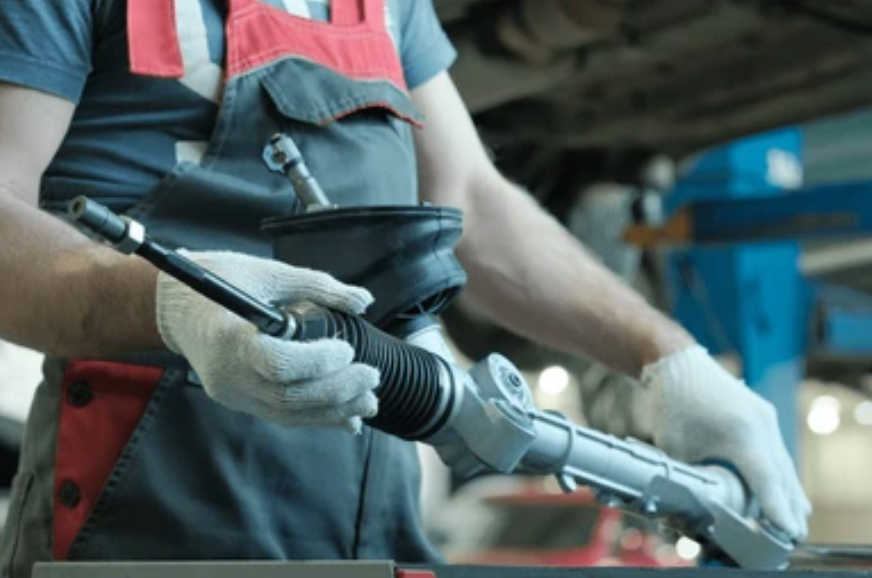How Does Power Steering Work?
Operating a vehicle goes beyond simply pressing the accelerator and steering. A pivotal component that enhances your ability to control the car, especially during turns and high speeds, is the power steering system. But what exactly is the mechanism behind power steering? In this blog, we will explore the intricacies of how power steering works.

What is Power Steering?
Power steering is a feature in cars that helps drivers steer by augmenting the steering effort of the steering wheel. It uses a hydraulic or electric system to amplify the force applied to the steering wheel, making it easier to turn the wheels when the car is moving slowly or stopped.

Hydraulic Power Steering (HPS)
The initial power-steering system, known as HPS, pioneered the field and continues to have extensive usage. This system operates through the utilization of hydraulic pressure generated by a pump driven by the engine. As you rotate the steering wheel, the steering gear propels fluid to one side of the piston, inducing its movement and consequently steering the wheels.
Electric Power Steering (EPS)
In contrast, EPS relies on an electric motor for assistance. As the driver turns the steering wheel, sensors register the input and instruct the motor to deliver the required assistance. EPS stands out for its energy efficiency, drawing power only when necessary.
Electro-Hydraulic Power Steering (EHPS)
EHPS is a hybrid system that blends elements from both HPS and EPS, utilizing an electric motor-driven hydraulic pump in lieu of depending on the engine. This setup combines the smooth operational qualities of hydraulic systems with the energy efficiency inherent in electric systems, providing the benefits of both approaches.

Power steering diminishes the physical exertion required for steering, particularly noticeable at lower speeds. This proves especially advantageous in scenarios like parking, where substantial steering wheel rotations are necessary while the vehicle is moving slowly or stationary.
Moreover, power steering systems enhance the vehicle's responsiveness and handling at higher speeds, affording the driver superior control and contributing to a safer and more enjoyable driving experience.

-
Does power steering only reduce effort at low speeds?
Indeed, power steering not only improves handling and responsiveness at higher speeds but also empowers the driver with greater control, thereby enhancing safety and overall driving enjoyment.
-
Can I retrofit my vehicle with power steering?
Depending on the make and model, it can be feasible to add power steering to a car under certain situations. Seek advice on compatibility and feasibility from a qualified mechanic.
Read another review here: The 10 Best Head Gasket Sealers Of 2024











